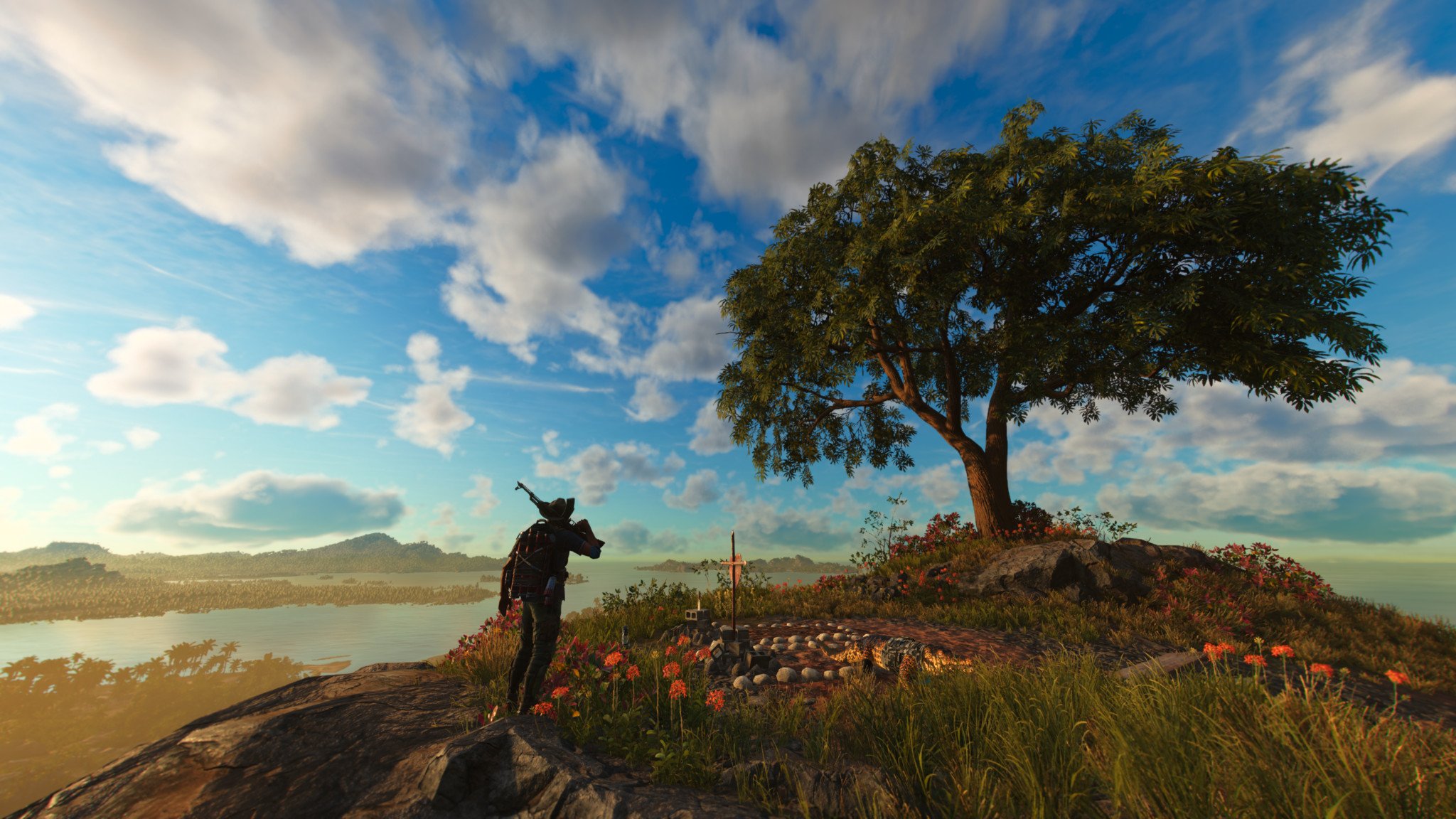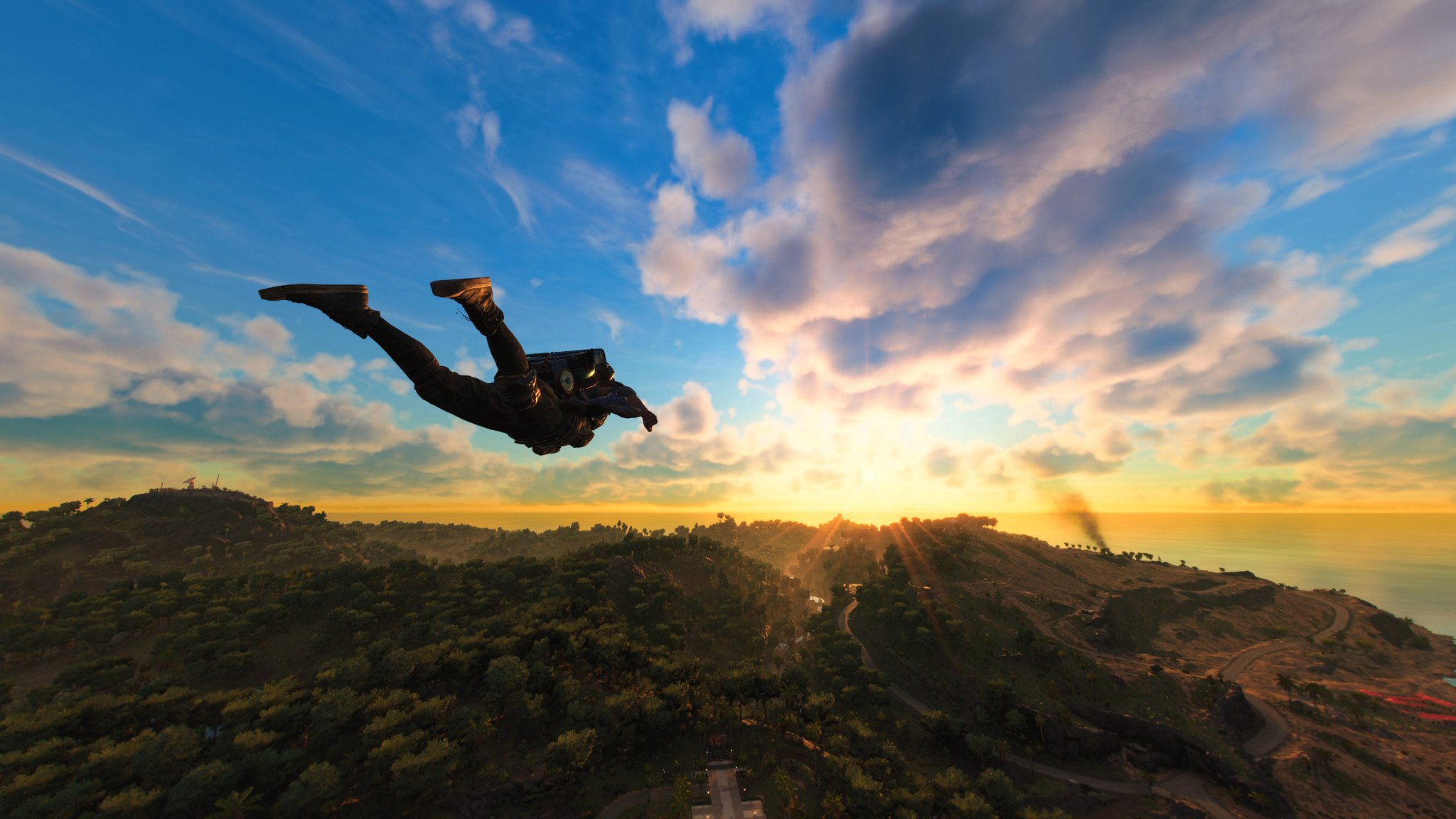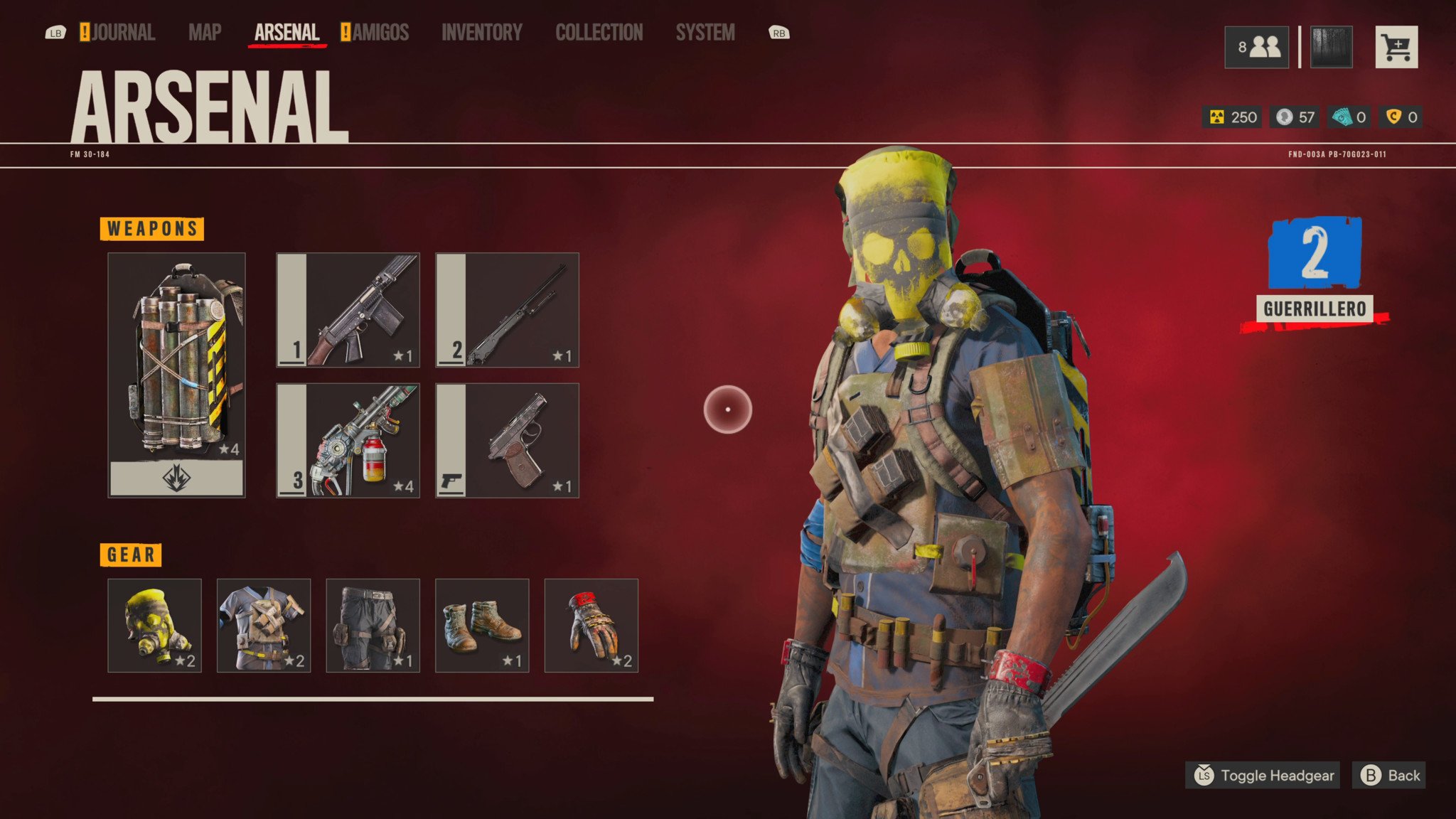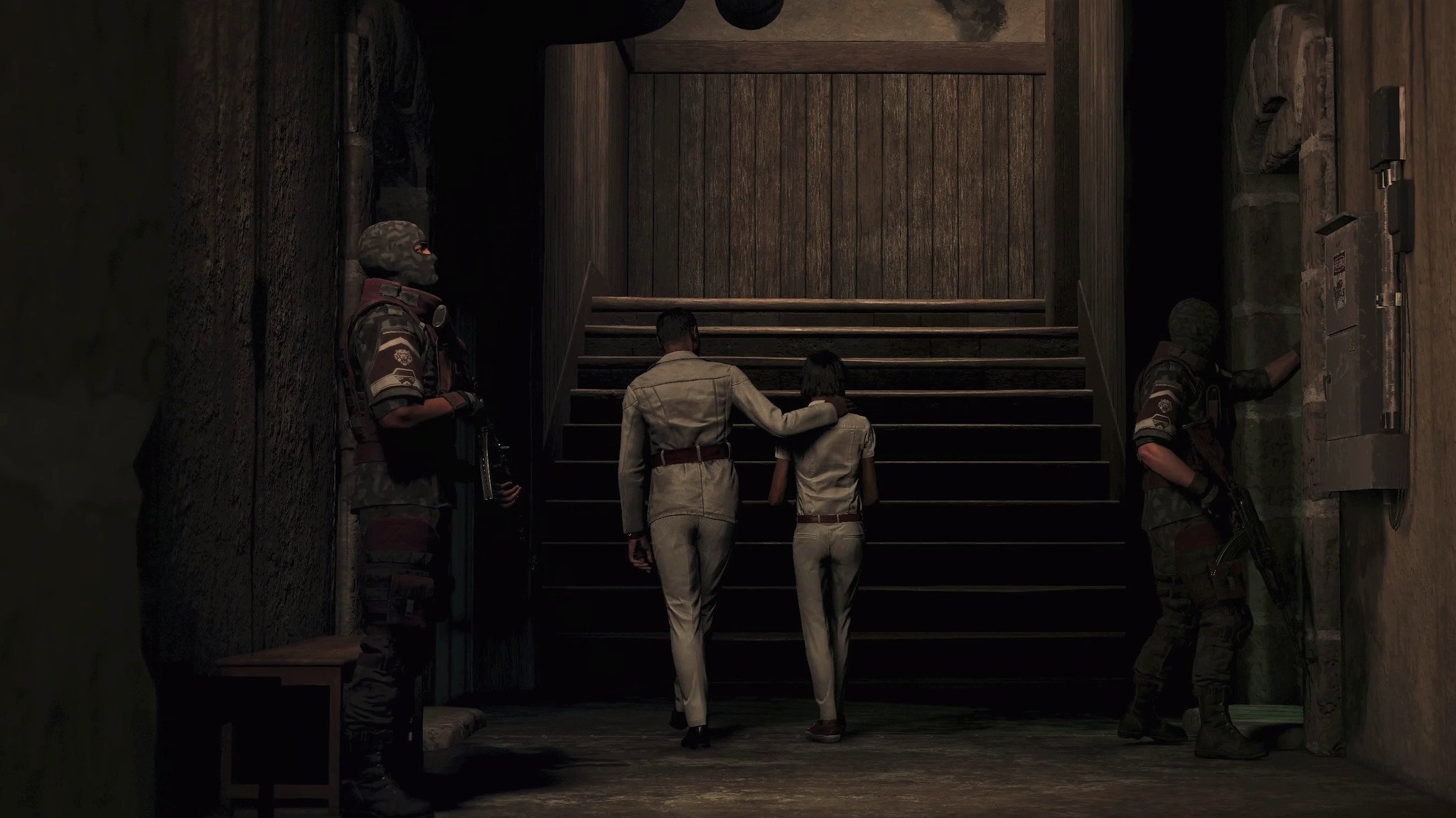There are a few things that are regarded as inevitable in life. Death and taxes are the most famous. We can apply that sense of inevitability to video games too. Year in, year out, we get more FIFA, and we get more Call of Duty. Ubisoft's inevitable genre du jour is its unique brand of open-world sandbox games. Depending on who you are, you may see this inevitability as a good thing. As for me, I cannot deny how incredibly tired I am of Ubisoft's innovation-starved assembly-line approach to game design.
If you've played Far Cry 3, 4, or 5, Ghost Recon Wildlands, Breakpoint, Watch Dogs Legion, Assassin's Creed Origins, Odyssey, or Valhalla — you don't need to read this review. You already know exactly how Far Cry 6 plays, because it's the same way all of Ubisoft's other open-world games play. Go here, blow up this outpost, repeat for 50 hours or so.
There's absolutely nothing in Far Cry 6 that changes up the tried and tested Ubisoft formula. And depending on who you are, that may or may not be a bad thing. If you can't get enough of the sandbox mayhem Ubisoft is known for, this game is for you. For everybody else, Far Cry 6 can be reliably skipped. You're not really missing anything.

Bottom line: Far Cry 6 is like Far Cry 5, 4, and 3. Despite an incredible performance from Giancarlo Esposito of Breaking Bad fame, there's very little new or fresh about this latest sandbox shooter.
Pros
- Tried and proven Far Cry sandbox mayhem
- Gorgeous open world with solid new-gen performance
- Giancarlo Esposito's performance as dictator Antón Castillo is top shelf stuff
- Huge emphasis on accessibility features
Cons
- There's nothing really new for anyone who played the last few Far Cry games
- Dumb AI and weird enemy respawn rules trip up the fun
- Despite Esposito's acting, the game's softball writing and forgettable characters make Far Cry tiring
Disclaimer: This review was made possible by a review code provided by Ubisoft. The company did not see the contents of the review before publishing. This review was conducted on an Xbox Series X.
Far Cry 6: The good stuff
Far Cry 6 is set in the fictional Caribbean nation of Yara, where a fascist regime led by Presidente Antón Castillo terrorizes the population. Cut off from the rest of the world, this secretive nation has seen its technology and society fall far behind the advances of the developed world, where poverty and corruption allow Castillo and his generals to live in luxury at the expense of the common folk.
Far Cry 6 clearly draws upon nations like North Korea and Cuba for its setting, with Castillo propaganda plastered all over the place. TV addresses and radio broadcasts describe the regime's mentality, making the populace fearful of revolutionary attitudes, urging them to report transgressors. "Traitors" are dealt with extreme prejudice, as the game's intro attests. Orphan Dani Rojas is the main character, and Castillo himself cuts short your attempt to smuggle yourself and your friends from the island, in a hailstorm of bullets.
The greatest thing about Far Cry 6 by a mile is the capture performance of Giancarlo Esposito as Antón Castillo. Castillo brings his unique brand of seething sociopathy to the table, creating one of Ubisoft's greatest villains yet. As the story progresses across the game's sizeable oceanic sandbox, the game treats us to interactions between Antón Castillo and his son, Diego, whom Castillo is attempting to groom to eventually take over as the nation's ruler.
All the latest news, reviews, and guides for Windows and Xbox diehards.
Yara sustains itself economically with a plant that is unique to the island, packaged and sold as a "cure for cancer." Although, the reality is not quite the shining vision the regime presents. An enslaved populace works the fields in horrific conditions, poisoned by potent pesticides on stolen lands. And that's only the tip of a very deep, very dark iceberg. Your role as Rojas is to dismantle the regime in typical Ubisoft fashion, working your way across a web of lieutenants and other subordinates to the big target.
Ubisoft says this is the biggest Far Cry world yet, and it certainly seems as such. A truly vast expanse of land awaits you, with some of the most impressive visuals to come from the team to date. Misty jungles and lush forests, rocky mountain peaks, shark-infested bays, and dense urban areas give you an impressive canvas for spreading violence and mayhem. Far Cry 6 gives you a broad toolkit to commit violence and mayhem too. Sniper rifles, shotguns, assault weapons, sub-machine guns, and more. Additionally, the "resolver" makeshift weaponry adds some unique flavor. Deadly CD-R disc launchers, spike throwers, makeshift railguns, and beyond. You can also unlock a range of "Amigo" pets, plucked right out of Far Cry Primal, to aid your revolutionary campaign. Each of those can be further customized as well, giving you a deep kit of customizable gameplay features to tailor your playstyle. Far Cry 6 also has impressive accessibility features, with multiple sections that cover various additional needs and settings.
There are various types of activities, alongside setpiece unique quest events that push the story forward. There are mountains of items to collect and unlock, giving completionists plenty of reasons to explore the sandbox. There are also co-op missions that let you play alongside your friends, too. Far Cry 6 won't disappoint fans of Ubisoft's patented open-world formula, but therein lies the problem. If you're feeling "Ubisoft Fatigue," there's really nothing new on offer here.
Far Cry 6: The bad stuff
Far Cry 6 once again puts you in the role of a guerilla fighting a desperate war for freedom, but from the outset, there's never really a sense of vulnerability in either the gameplay or story. You're given a huge arsenal of toys to play with, from rocket launchers, jets, tanks, helicopters, and so on, which undermine the plight of the game's characters. How am I supposed to believe this is a desperate fight for revolution when the game is so intent on making you feel like G.I. Joe the second I step on the island. There's nothing necessarily wrong with that, but it's the inconsistency there that reduces the impact of the game's writing.
Inconsistencies give Far Cry 6's writing a forced, clunky delivery that showcases a lack of cohesion.
Ubisoft's softball "politics but not politics" approach to writing does a disservice to the game and its characters. The gameplay design revolves around making you feel invincible, and as a result, it makes me care less about the overarching narrative. I'd argue that most people aren't really playing Far Cry for its story at this point, but considering Ubisoft spent the big bucks to get Giancarlo Esposito in the role of the game's central antagonist, I can't help but feel like Ubisoft at least wanted me to care. Sadly, I just didn't.
The game is unapologetically violent, and none of the characters seems particularly affected by it. Violence is played up for laughs most of the time, with enemy soldier's deaths played up for comedy half of the time. The result is a confused and inconsistent narrative. The game puts a big emphasis on how the regime divides the population by "othering" certain people in society. However, the "heroes" do exactly the same thing, and nobody really calls them out on it. They kill soldiers in cutscenes with smiles and laughs, even though some of the treacherous soldiers often reveal how they're victims of the regime too. The main character barely comments on events, lacking a personality of his or her own. There are numerous other inconsistencies between story mission activities and the plot that give Far Cry 6's writing a forced, clunky delivery that showcases a lack of cohesion between the game's various departments.
Source: Ubisoft | Windows Central
I think it's fine to have a video game that is fun for the sake of fun. I think it's fine for a game to have strong political messages too. Ubisoft, however, is remarkably bad at reconciling fun and feeling. The serious subjects that emerge throughout the game fall flat, and are almost exploitative when they stand shoulder to shoulder with adolescent "comedic" moments that suck the gravity out of many of the game's darker themes. As such, I could only find surface-level engagement with the plot. Without the story driving me forward, Far Cry 6 devolves into a standard sandbox experience that we've seen time and time again since the Xbox 360 era.
There's nothing necessarily terrible in Far Cry 6, per se. It's just that I've played it many, many times before. Far Cry 6's biggest failure is the lack of innovation.
Like I said in the intro, Far Cry 6 plays like almost every other Ubisoft sandbox open world of recent times. The island of Yara is impressive, with a ton of verticality and a variety of locations. However, after playing it for about four hours, you'll have seen pretty much everything there is to see. Infiltrating outposts stealthily, or going in guns blazing presents similar opportunities for mayhem and carnage as previous Ubisoft games of recent times, whether it's Far Cry itself or titles like Ghost Recon. There's not a huge amount here that changes up the formula, with many features established from previous Far Cry games like the grappling hook, wingsuit, pets, and beyond returning for another outing.
Far Cry 6 does add the new Supremo resolver weapons that can be upgraded and customized in various ways, but they aren't really unique enough to carry the entire game by themselves. The enemies are similarly unsatisfying to fight as they were in previous games, with baffling AI that can see through walls and the terrain when it suits them, and bullet sponge heavies that defy heavy-caliber bullets to the face as if they were being hit by Nerf darts. The game respawns enemies inconsistently as well, which can undermine stealthy infiltration efforts. Eventually, I got tired of enemies arbitrarily respawning, I eventually just gave up on stealth altogether. It's far quicker to just go guns blazing, armed to the teeth with explosives. That's ultimately how I felt only a few hours in — I just wanted it to be over as quickly as possible.
Source: Ubisoft | Windows Central
Despite copious amounts of gore in cutscenes, there's not really any in combat, which might have added a sense of impact to the game's scaling weapons. As it happens, the guns you get at rank 1 essentially produce the same effectiveness several ranks higher, adding to the sense of repetition. Given the general success of Ubisoft's franchises though, I feel as if they're just giving players more of what they're asking for.
Indeed, there's nothing necessarily terrible in Far Cry 6, per se. It's just that I've played it many, many times before, so perhaps it's a me problem. Still, I'd argue Far Cry 6's biggest failure is the lack of innovation. This formula was great several games ago, and if you're a newcomer to the franchise, or have steered clear of recent Ubisoft games, it may just be fresh enough for you. As someone who is just desperate for Ubisoft to do something, anything fresh, this ain't it.
Far Cry 6: Should you play it?
Far Cry 6's headline act is Presidente Castillo, and the character's twisted delivery and unnerving interactions with his son is almost enough to carry the story by itself. There are a few other interesting characters scattered around, but they're hidden beneath mountains of repetitive bulk that I feel got tiring several Ubisoft games ago.
Far Cry 6 doesn't necessarily do anything poorly. The game performs decently well on Xbox Series X, despite some screen tearing in some of the more dense urban areas. The story is serviceable, if inconsistent and clunky, and the combat is the same passable experience we've seen before. Far Cry 6 features the biggest and most impressive open world yet, and despite my fatigue with the formula, I was still able to squeeze some fun out of the game. Planning and executing a stealthy infiltration is still as satisfying as it was as far back as Far Cry 2, despite the awkward AI and quirky enemy spawn system.
Far Cry 6 doesn't do enough to stand out from its predecessors in my view, but that may well be a me problem. Ultimately, whether or not you'll enjoy this falls upon how bored you are of Ubisoft's format. If you loved Far Cry 5 and want more of the same, you'll probably love Far Cry 6.

Jez Corden is the Executive Editor at Windows Central, focusing primarily on all things Xbox and gaming. Jez is known for breaking exclusive news and analysis as relates to the Microsoft ecosystem while being powered by tea. Follow on Twitter (X) and tune in to the XB2 Podcast, all about, you guessed it, Xbox!










